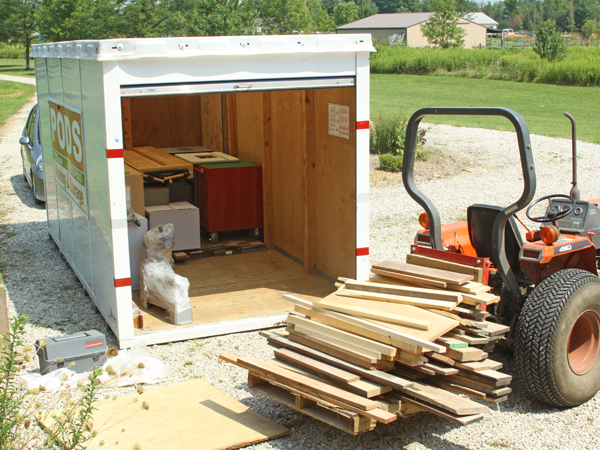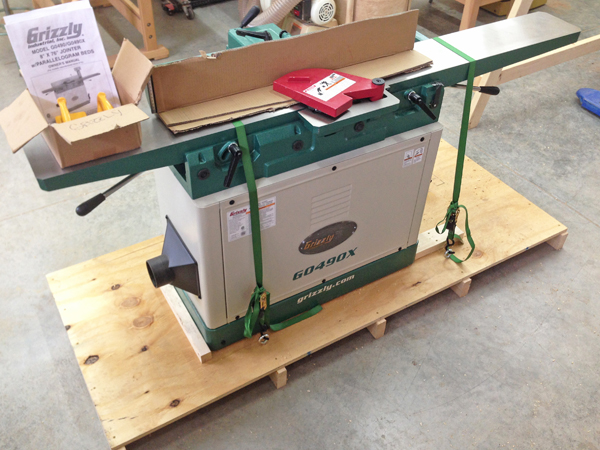
I am moving to Virginia soon from another state, and I have no idea about the best way to move all of my machinery across the country. I’m sure I’m not the first person to run into this issue. I have several larger machines (cabinet table saw, large floor-standing lathe, large floor-standing band saw, benches, etc.) to go with all of the smaller tools and chests acquired over the years. I would love any advice you could offer. – Greg Glennon
Chris Marshall: Having moved three times with lots of shop machinery — two of those moves were several states away — I know exactly the plight you’re in. And, I will suggest a couple of options for moving machinery. If you are having a moving company relocate you, most will move woodworking machinery, too. Of course, that weight adds up fast, and they may have dimensional stipulations for how large each piece of machinery can be, but they WILL move your stuff … for a price. Trouble is, you are at the mercy of movers who may not know, for instance, that a cabinet saw should not be lifted by its extension wings. They also may not know where the center of gravity is for each machine. You know that far better than they will. So, if you’re leaving your faith in a moving company, I would remove extension wings, planer tables and lathe legs, lower a big drill press table as far as it will go and lock your jointer tables in position as best you can. Then, label your machines with advice for the movers to give them a head’s up: (“Top heavy,” “Do not lift here,” etc.). Document the condition of your machinery with photos before it gets loaded on the truck so you’ll have a record if anything gets broken in transit. An ounce of prevention, right? Treat your machines like the most precious cargo you own. That’s my motto.
For our most recent move, we had to foot most of the bill, so we used PODS containers instead of hiring a moving company. Upside: I could load each piece of machinery myself. So, I built simple wood skids, strapped each machine to it with ratcheting tie downs and wrapped many of my tools with shrink wrap. I rented a pallet jack to load them, and I made the skids large enough so that their dimensions extended beyond the machine in all directions. That gave me “bumpers” of sorts to make sure fragile cast edges and painted surfaces wouldn’t rub shoulders as they rolled down the highway. PODS were a great way to move my shop. The large PODS containers will hold 10,000 lbs. for a fixed cost, and you can load quite a bit in an 8- x 8- x 16-ft. container. It took one container to move my shop machines, fixtures and lumber.
Tim Inman: I have moved my shops several times over the years. The last move was over 500 miles. So, I feel your anguish. To be blunt and truthful based on my own experiences, you need to ask yourself how much these tools are really worth to you. If you figure the cost of trucks and movers, when you’re all done moving, these tools will be quite valuable! My best advice (which of course I did not take on any of my moves) is to sell your machines before you move, and transport the cash. Then, buy replacements when you get to your new location. Maybe it’s time to upgrade anyway. Now, I’m different! (Sarcasm intended!) I have a number of really old, heavy-duty commercial grade cast-iron machines, some with babbet bearings. Babbet bearings on a fine wood lathe are unbeatable because they don’t chatter and don’t vibrate like ball bearings do. They simply cannot be replaced in new equipment. So, I moved my machines. I really like my machines and I’m understanding that it was just dumb to pay so much to haul them around. But are they really that special? Other than owning them, I could certainly have replaced them with new or high quality locally available used machines. Woodworking tools and machines are universally available everywhere.
But OK, you still want to move them. Table saws and band saws are top-heavy. They will tip over during quick stops and sharp cornering. I know. When they do tip over, they will either bend or break. Everything will get shaken. When you get to setting up in your new shop, plan on resetting everything. Realign the table to the cabinet. Realign the wheels of the band saw, etc. Buy as many “wheels” as you can and use them. Most mover trucks have ramps. This makes it easier to get big machines on and off. Can you access a forklift? Wow! That really makes life easier – and safer. Last point if you move your machines. They are very heavy and often have sharp edges and/or blades. Beware.







